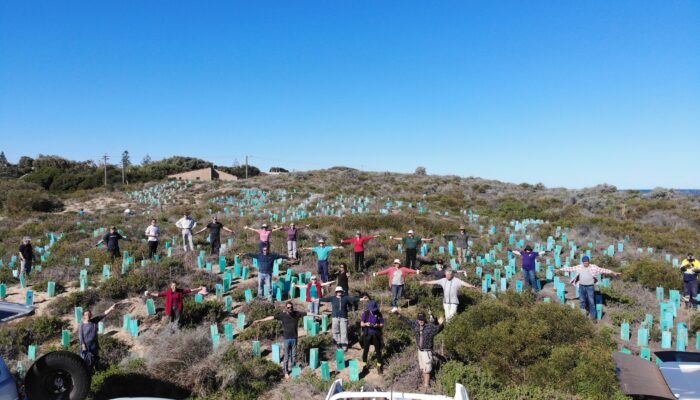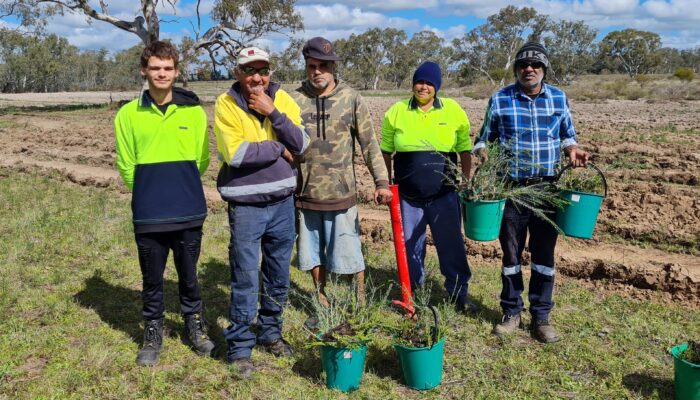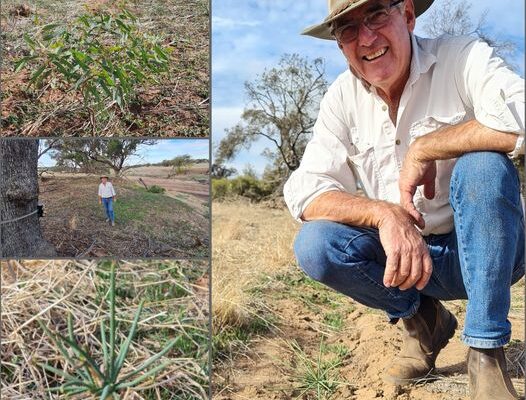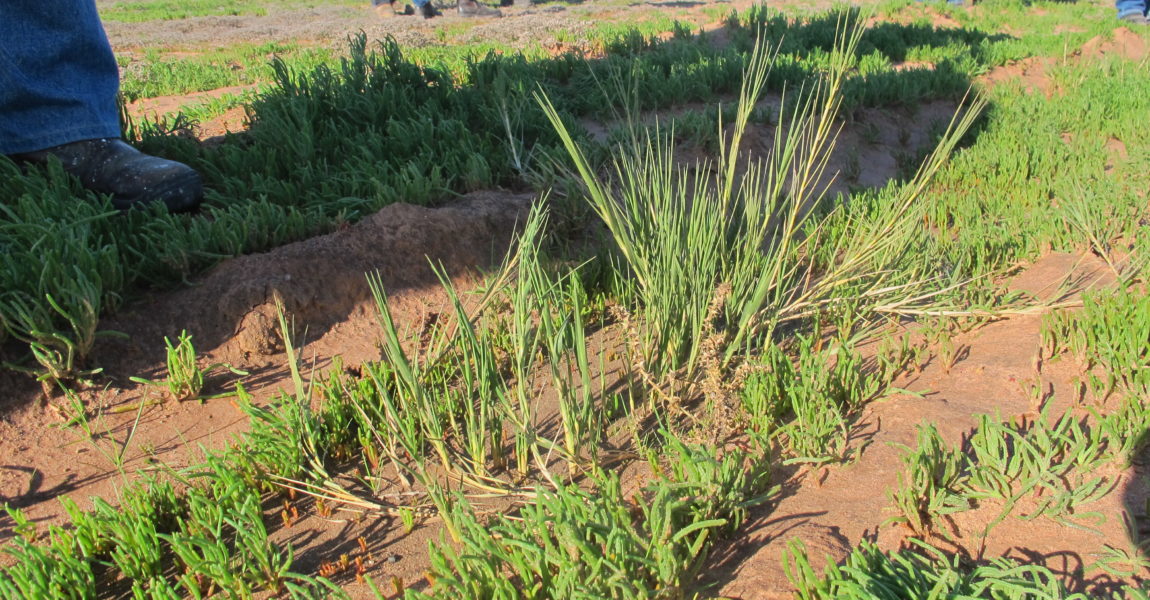
NACC 1512-05-05 – Demonstration of NyPa Forage to Stabilise Saline Land
Project Aim
NyPa Forage (Distichlis spicata var. yensen-4a) is a perennial salt loving forage grass that is the result of 20 years of selections from the native American grass. The NyPa plants have an exceptional capacity to move salt out of the water it takes up in respiration, this is due to its deep root structure and it’s very efficient salt gland. Benefits of NyPa include
- Produces palatable green forage on saline discharge sites throughout the summer months,
- Helps stabilize the soil, helping to prevent further degradation such as erosion and salt spread and
- Has been shown to improve the soil chemical and physical properties including through the bio-sequestration of carbon.
Finding and applying appropriate methods to rehabilitate saline land in the Moore catchment is on-going. Plants need to handle high salt levels and waterlogging. Woody perennials such as saltbush play a key role to rehabilitating saltland but inter row plants that can handle the harsh conditions have been few up to now. NyPa Australia are keen to continue promoting NyPa Forage as a rehabilitation and increased pasture production tool in this area. NyPa has multiple benefits both in revegetating saline land and creating pasture. It is notable that the grass does not hold salt in its tissue, unlike most halophytes. This makes it a good inter row pasture to offset the salt in saltbush plus it can be grazed hard.
A recent trial of NyPa Forage has been demonstrated on saline land at Gillingarra. This trial has been successful so far in demonstrating that a grass can be established on very poor saline waterlogged soil.
This new project will help demonstrate NyPa Forage to a whole new audience especially as it is located along a main road and travellers will be able to view the revegetation in progress. 10 ha of NyPa Forage will be established on salt affected land on a degraded lake fringe on a farm west of Moora.
Project Description
This project will establish 10 ha of NyPa Forage on salt affected land on a farm west of Moora (see map). The farm has recently been taken over by new management who are looking to recover the land after many years of overstocking. The project will partner NyPa Australia – licensee and supplier of NyPa, and Moora-Miling Pasture Improvement Group – local grower’s group of which the farmer is a committee member.
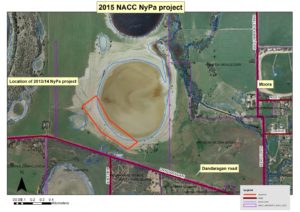
In late 2014, 8,000 NyPa Forage plants will be ordered and licence obtained from NyPa Australia. This licence will enable the farmer to plant NyPa Forage during the project and any future NyPa Forage.
The landholder will prepare the site (spraying and removal of weeds, followed by deep ripping and application of fertiliser). NyPa Forage will be planted into the rip lines by the farmer at a minimum density of 800 stems per hectare. Photo points will be established and a sign produced for location on the Dandaragan road.
Community engagement – a short paddock diary film for the Web will be produced showing benefits and establishment methods of NyPa and farmer’s involvement. A field day will be organised post establishment to showcase NyPa Forage to other land managers.

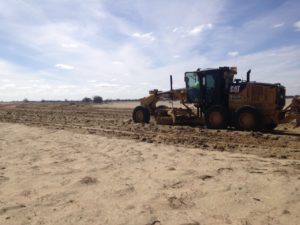
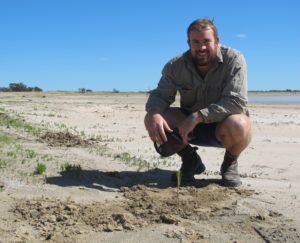
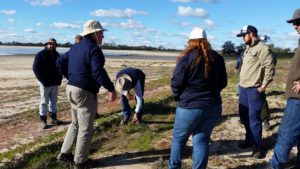
Results
Plant counts: estimate a 10 – 20% survival overall through the three densities. Establishment was so poor overall that it didn’t seem necessary to try and differentiate survival according to densities.
The surviving plants were generally linked to pockets of water and damper spots.
Soil testing: Soil tests results from prior to planting reveal an alkaline soil. Surface pH 7.8 down to subsurface of pH 6. EC was between 0.125 and 0.15ms/cm . OC between 0.56 and 0.76%
Photo monitoring of the site isn’t very conducive of what is happened on the ground because of the plants being so small. Close up photos of individual plants have been more indicative of progress. The photo monitoring will continue biannually and updates via media networks will occur.
Hand planting vs machine planting: the majority of the the plants were hand planted using shovels. A line of NyPa was planted using a tractor and tree planter as an experiment. The NyPa tillers were very short so it took a few attempts to learn to plant without burying too deep. Survival rates were similar to the rest of the site but it did show that the NyPa could be planted using this method if the landholder couldn’t get enough labour for hand planting.
Jim Hamilton, owner of the property, was a bit disappointed with the overall take of the plants but understands that what had survived will spread well. They are going to infill with some plants from NyPa next year (hoping to do it this year but short staffed). They understand it will be a long term plan to rehabilitate the site as it is in such poor condition. They know it is a problem area on their farm and so have planted a few hundred trees and bushes – Sheoaks and Melaleucas to see if they will establish on the difficult site. If successful, they will plant more next year. So overall not completely disheartened with the result but glad they had financial help with the trial.
Video
Findings
The success rate of the Nypa was low – around 10-20% survival which was disappointing. This is probably because the site just wasn’t wet enough to allow the NyPa tillers to establish. The site was watered by the farmer a month after planting and plants looked good into early summer, but then the dry summer/autumn prevailed and plants didn’t make it.
From analysing where the NyPa had survived, there was lying water or the NyPa was located in an erosion channel where it would have received water during rains. These plants look very healthy and have started running/spreading. The way forward is to encourage these clusters of healthy plants to form a nursery for runners to be extracted and spread around the site over the coming years. Gillingarra LCDC are also keen on trying some different establishment methods using plants from the Gillingarra site.
Using NyPa for stabilising this site will work but will take a good few years.
Key learnings
- NyPa is not a quick fix stabilisation tool but will do the job eventually
- The wetter the better for establishment
- NyPa is still an expensive product for farmers to purchase due to the licence cost. It is approximately twice the cost to establish than saltbush. NyPa Aus needs to make the product more competitive to encourage uptake (reduce or remove licence cost or cheaper plants).
- Further demonstrations needed to test NyPa on different soil types and situations.

